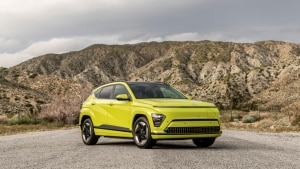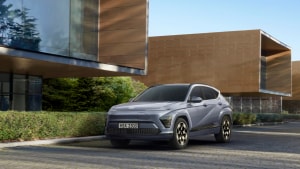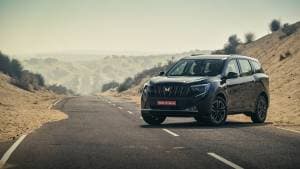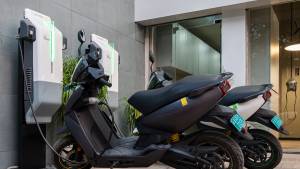2019 Hyundai Kona Electric 39.2kWh India spec first drive review
Hyundai India launched the Kona at a rather attractive, in my opinion, price of Rs 25.3 lakh across India. At that price, the Kona has been garnering polarising opinions, with most saying it is too expensive. Well, early adopters, you won't mind the price, it's a steal for what is a proper SUV with much better quality, finish, materials and styling than what you'd get in the Tucson or even the Santa Fe. And the naysayers, they won't know what hit them if Tesla came down to India and announced a price upwards of Rs 50 lakhs for cars like the Model S and the Model X. I'd like to see the reactions then. But staying away from the price debate, here is what I felt having driven the Kona at the Buddh International Circuit.
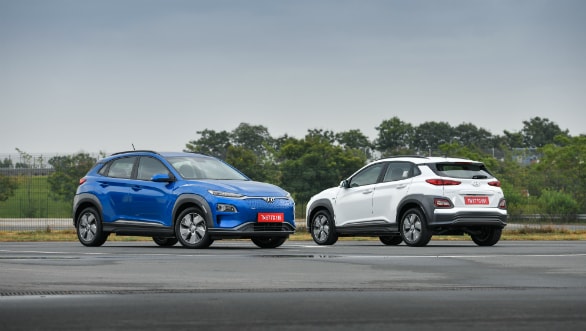
The Hyundai Kona is India's first electric SUV, I'd go a step further and say it's the first proper electric vehicle unlike the golf cart like derivatives we've seen in the past. It is first and foremost a proper SUV, and I believe it should be seen with that perspective, the battery and electric motor is just a powertrain option, instead of conventional fossil-fuel powered engines. So as an SUV, it is without a doubt a very stylish and well-built vehicle. It blends a bit of the quirky with traditional styling cues and will undoubtedly attract a lot of attention. It's not a design language that quite appeals to me, but then again I haven't yet seen an iteration of an EV that has worked well without a conventional grille. But I will leave the design and styling opinions to you, same with the interiors, though that I did find this area more attractive. It's clean, has the right mix of soft-touch materials, matte aluminium finished layers and rather busy instrumentation. That steering wheel is quite a crowded place, and I do think that Hyundai could have executed it in a more futuristic manner with flush fitting buttons. As usual, I'd opine that an owner who has to spend more time behind the steering wheel, would appreciate a nicer looking glasshouse.

At the heart of the Kona is its electric motor and battery-powered powertrain. Hyundai India will be offering the Kona with the 100kW electric motor and the 39.2kWh battery instead of the 64kWh battery-powered vehicle with the 150kW motor. You can read that drive opinion here. Hyundai claims this combination is good for 345km, but under ARAI test conditions, their certification claims a driving range of 452km. That is impressive, however, I'd err on the side of caution and say that the 300-350km range is a bit more realistic in an everyday driving situation. The Lithium-polymer battery is developed by Hyundai in association with LG (who make the cells in the battery) and the electric motor is developed in-house. Hyundai offers an 8-year/1,60,000km warranty on the battery. However, this battery is good for some 2,000 charging cycles which should amount to a good 11 years of usage. The battery uses a cathode chemistry known as NMC 622, which represents a ratio of 60 per cent nickel, 20 per cent manganese and 20 per cent cobalt and has three cell modules placed under the floor. This battery stack is liquid-cooled, it uses a coolant that needs replacing every 30,000km. On the flip side, I believe the India spec car won't get a battery heater so that it can be used optimally in cold weather conditions. However, in the future depending on regional demand, the Kona can be tailored to meet the requirement if needed so that the cold weather does not adversely affect battery charge. Hyundai hasn't revealed yet how they intend to dispose the battery, but I expect in the next few years, these solutions will also present themselves.
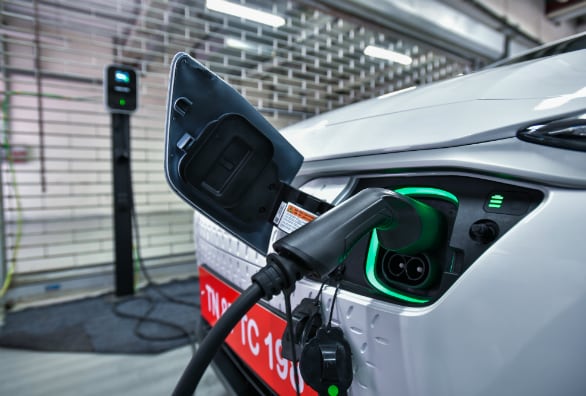
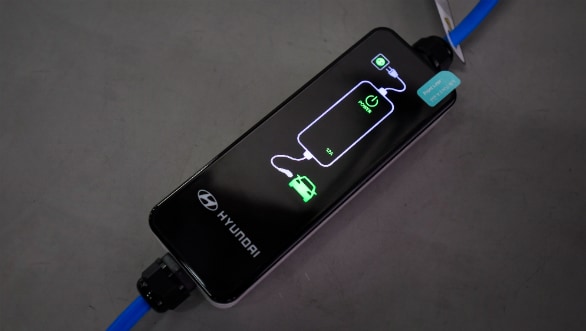
Charging the battery can be done through multiple options. Hyundai will offer two chargers with every car purchased. One is a portable charger that can be plugged into any 3-pin plug point. It takes a while for the batteries to get charged through this, but a couple of hours of charge should get you enough juice to make it home. It's a last resort option. Then there is the home charging unit that Hyundai will install at your home through their partner, Mass Tech. This will charge your battery to a 100 per cent in six hours and 10 minutes, or overnight. Over and above this, Hyundai will be installing quick charging stations both, at their dealerships and at select IOCL fuel stations that will give you a maximum of 80 per cent battery charge in just 57 minutes. Hyundai hasn't revealed what the cost for using the quick charging stations are at the moment, but expect a nominal fee. There are other charging options offered as emergency services. Hyundai will have mobile charging stations or using another Kona offer vehicle to vehicle charging options when you run out of charge. However, the scope of using the Kona is still limited to urban areas. Without a firm plan to place charging units in various cities and small towns, and until that infrastructure network reaches the highways taking the Kona or any other EV outstation would be a challenge. Within urban areas, Hyundai has tied up with MapMyIndia who have mapped out the charging stations in various cities. The information is then displayed on Hyundai's website or an app.

While driving, however, do keep in mind, you can also use the regenerative braking feature to recharge your battery. It has four modes, selected by pulling on the paddles behind the steering. These increase or decrease the level of recuperation (so you'd feel the vehicle decelerate much harder or softer when you lift off the throttle).

The Kona's 100kW motor is quick, you get a 136PS of max power and 395Nm of maximum torque instantly. Acceleration is sharp, so sharp in fact that in wet conditions it will need all the electronic aids to keep the Kona running in a straight line. Drivers will have to exercise caution and learn how to drive a vehicle that has so much torque being delivered instantaneously. 0-100kmph takes the Kona Electric in just 9.7 seconds. The biggest advantage of course as with any electric vehicle is the lack of noise, and the only audible sound is that of the tyres, though this is more pronounced on the outside rather than inside the car. This motor is mated to a single-speed reduction gear which has just one ratio and power is delivered to the front wheels only. Hyundai does not offer a 4WD version of the Kona anywhere in the world as of now.
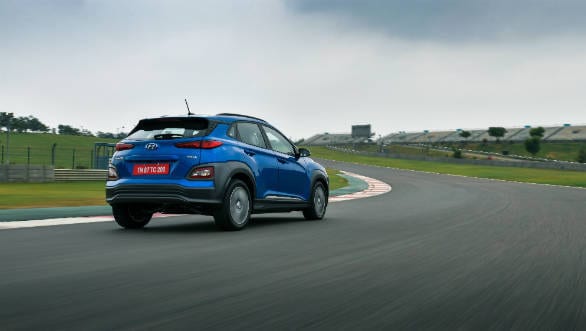
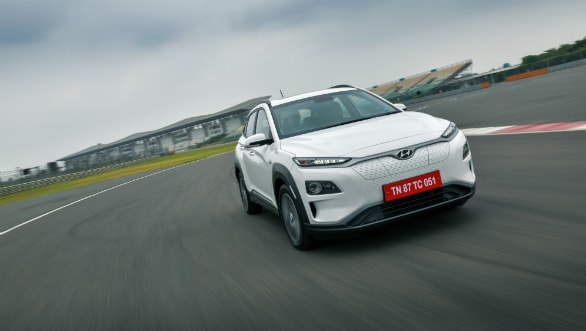
At the BIC on the racetrack, the range drops scarily fast, but then I don't suppose much pedal to metal driving in real-world conditions would ever take place. Either way, you have four driving modes to select from. Eco+, Eco, Normal and Sport. The latter being the most fun to drive mode while the foremost gives you the maximum range. Handling is brilliant, the Kona rides on 225/65 R17 tyres and while the tyres are low rolling resistance, these Nexens still have a wide dynamic range to offer fantastic stability. I can't comment on the ride quality and how it feels since we haven't driven on road yet. There isn't much body roll however and the car overall feels well balanced and precise. Even the steering does not have the traditional lacklustre feel strongly associated with most Hyundais, it's precise, weighs up well at speed and has this substantial feel when you grip it. There is also little understeer, even when pushed reasonably hard into corners. What I did like is, thanks to the placement of the batteries under the floorpan, the weight of the Kona feels like it is centred low and spread evenly. Plus it has a fairly large footprint with a 2,600mm wheelbase and 1,565mm(f)/1,575mm(r) track length.
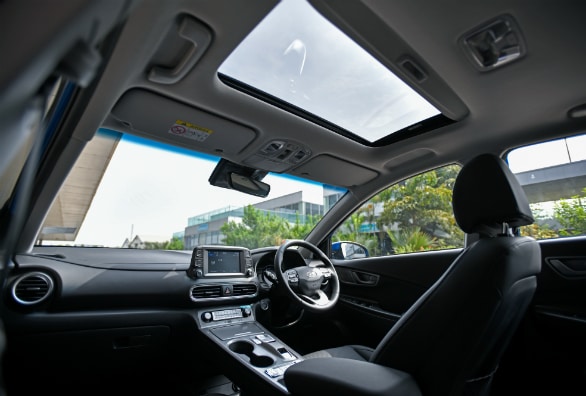
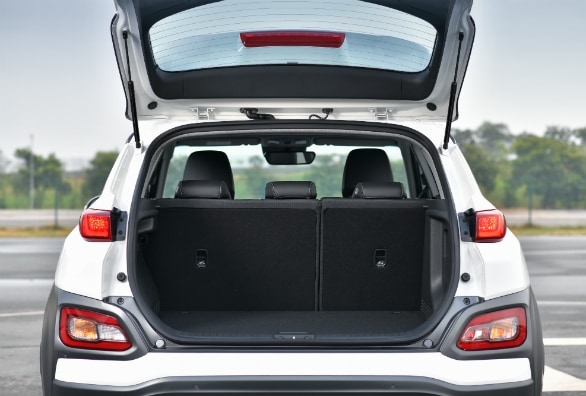
I'm not going to delve much into the features that can be found in the Kona. You can read all about it here. All I will say is that there is a lot of it to look forward to, and very, very little of it is gimmicky. The interiors are very comfortable, there is enough space in the middle row and the boot can be expanded by folding down the middle row fully or in a 60:40 split to liberate ample more space. Most of all, and at the risk of repeating myself, I love the fact that this is a proper vehicle. It drives like what we are used to, it operates like what we are used to. The only bits you have to get used to are, the noiseless acceleration and the charging cycles. Otherwise, the Kona is every bit just what the fledgeling electrification movement in India needs.
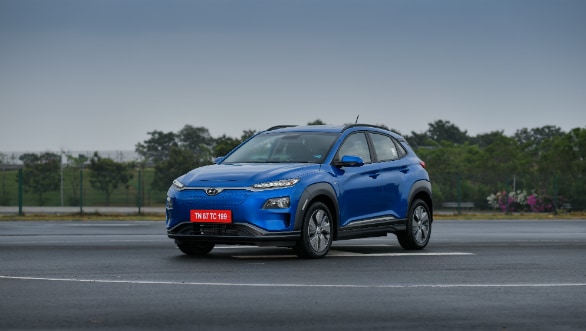
Footnote: Hyundai will be assembling the Kona Electric in India and initially there will be just 500 units up for sale. Depending on the response, Hyundai will allocate more units for the Indian market. On the pricing front, once the expected EV incentives announced in the recent budget come into effect, the prices for the Kona will drop by, I anticipate, almost 2 lakhs if not more.
Also Read,
Interview: Hyundai's eco vehicles head on the Kona Electric's battery life, charging and range
Top five facts about the 2019 Hyundai Kona Electric SUV
Hyundai Kona Electric SUV launched in India at Rs 25.30 lakh
Live Updates: 2019 Hyundai Kona all-electric crossover India launch
Feature highlights of the all-electric Hyundai Kona crossover launch in India
2019 Hyundai Kona electric first drive review
2019 Hyundai Tucson and Kona | First Drives Video Review
Starts Rs 23.72 Lakhs
-NA-
Automatic
136
395
-NA-
Starts Rs 27.69 Lakhs
1997cc
Automatic
156
416
12.95 Kmpl

